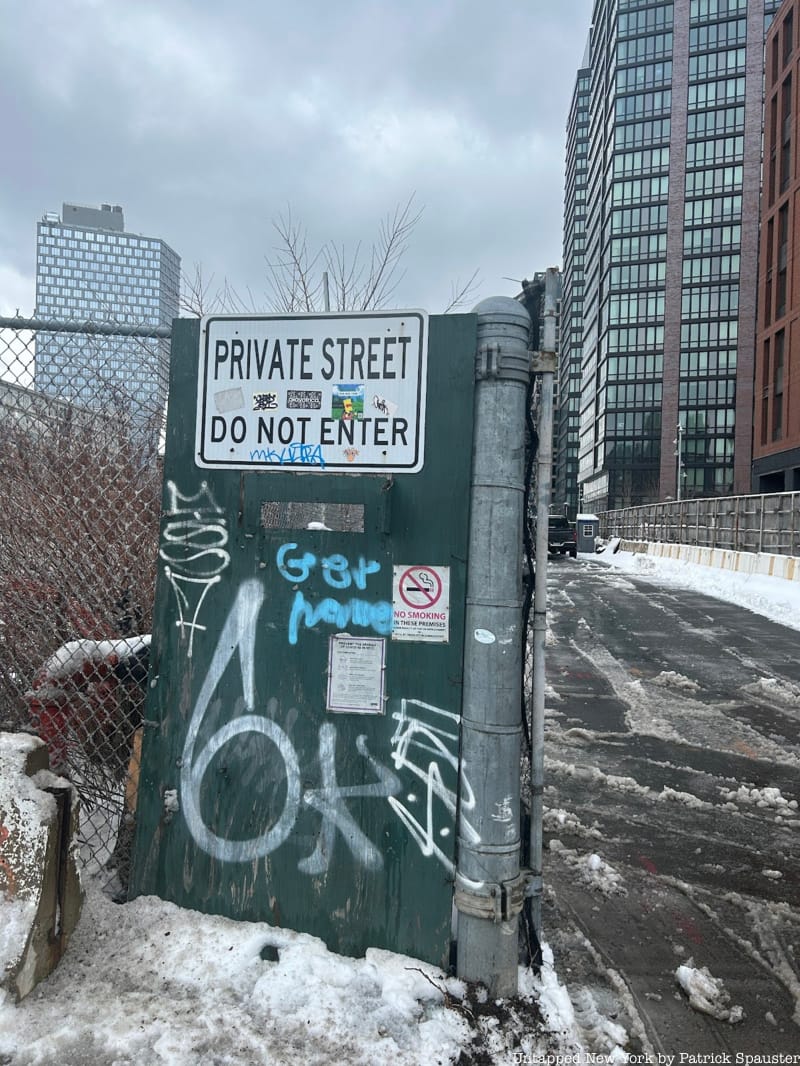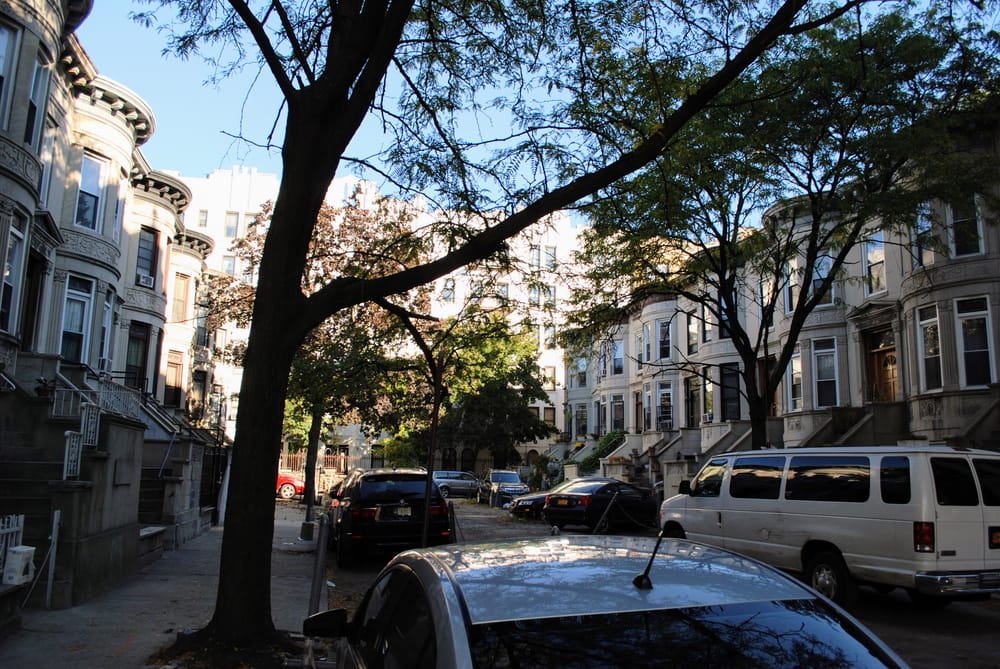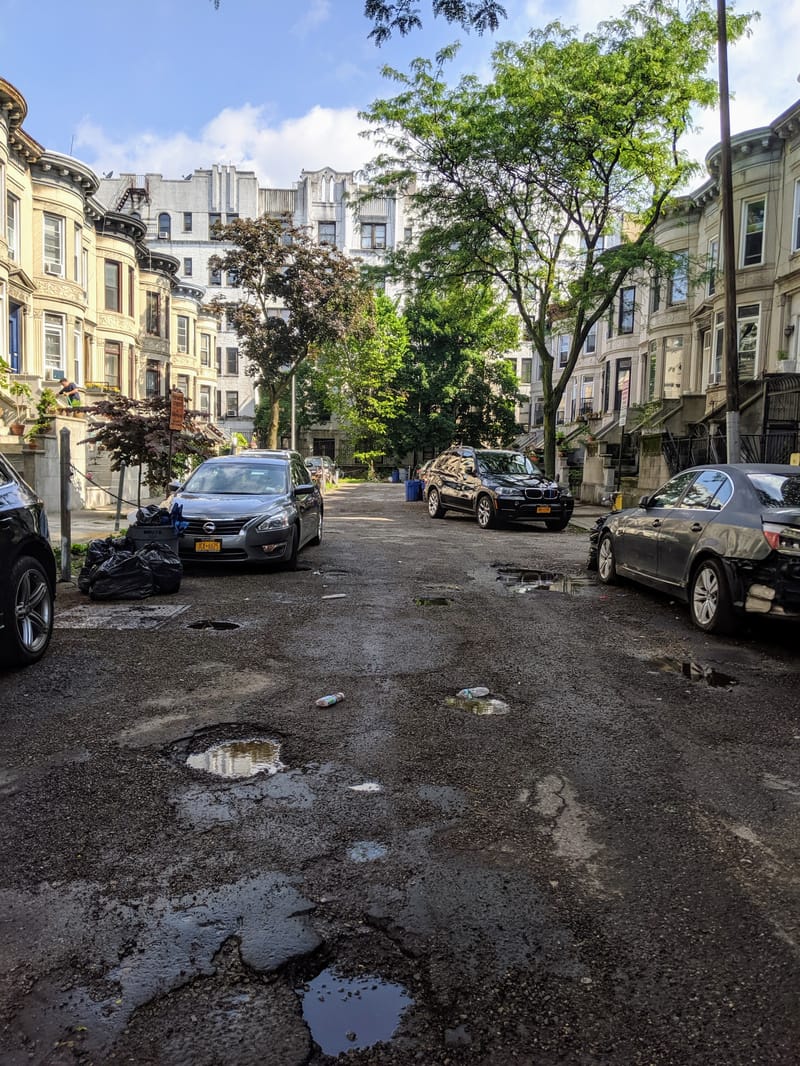Minimalists Win the Great NYC Subway Map Debate, 50 Years Later
The NYC subway map has a new look that might look familiar...

Discover the perks and drawbacks of living on a street not on the official map!

When Michael Zuvich and Jesse Spry moved to Parkside Court in Brooklyn, they didn't realize the street they lived on wasn’t actually a street at all. According to the city, at least, Parkside Court, their little dead end in Prospect Lefferts Gardens wasn’t on the official street map of Brooklyn.
Parkside Court is one of 324 “private” streets in Brooklyn, according to the Brooklyn Borough President’s office. Private streets are not officially part of the street grid and don’t get the same maintenance and services of a typical residential street. Private streets can offer a nice sense of community, Zuvich and Spry told Untapped New York, but it also means paying to take care of the street yourself.
“I don’t think we had a clue,” said Zuvich. “We saw the property and quickly fell in love with it and had to quickly learn about the street,” he added.
Residents of private streets still get their mail delivered to their door, but have to pay for their own street maintenance and to get electric and cable lines from the street. Making those decisions as a community can be challenging.
Brooklyn has hundreds of tucked-away private streets all over the borough. Far more residential than Manhattan and less dense, Brooklyn’s street grid is full of secret streets that you pass by every day without a second look.
Brooklyn’s private streets are all across the borough, but there are particular clusters in some of the borough’s beachside communities, like in Seagate on the Western tip of Coney Island, where short residential streets fan out and dead-end into the ocean.

Other private streets are more public, like Pacific Street just East of Barclays Center, which was de-mapped as part of the Atlantic Yards development project and will eventually become part of an expanded Pacific Park.
Living on a private street has its perks. Parkside Court is lined with ornamented limestone pre-war townhomes and large mature trees that create a calming canopy. With just 17 houses lining the dead-end street, Parkside Court is quiet, quaint, and narrow.

That closeness means a nice community. Kids play in the street, neighbors have each other over for dinner, or hang out at the annual block party.
“You are very much in each other's space on a dead street. You see the faces probably more frequently than what you would otherwise,” said Spry.
Zuvich and Spry have lived in apartment buildings, too, and they say it's not quite the same. “In a bigger building, you know you say hi to your neighbor, but you never really hang out with them.”
There are more practical benefits too. The Q train line and Prospect Park are just to the West. To the east, the bustling Flatbush Avenue. And everyone on the block has their own parking spot cordoned off in front of the house.
While Parkside Court residents still get their mail delivered to their door and their trash picked up, much of the responsibility for maintaining the street is left to them. That can be expensive and requires close coordination with neighbors.
Zuvich suspects that when they moved in in the early 2000s, the street hadn’t been paved in decades. There were massive potholes where rainwater collected, making it a bumpy road and a tripping hazard. They asked the city about paving the street - but the Department of Transportation said they were on their own. So, they started a campaign to raise money to pay a private company to pave the street.

The effort to get a few thousand bucks from each household to pay the $40,000 dollar paving bill took years. In the end, they didn’t get everyone to sign on; some residents, growing impatient, chipped in more than their share.
“The challenges are definitely collectively, trying to move forward or make a decision on something. I had so much trouble,” said Spry.
Sharing a private street requires a lot of coordination, but with no formal structure, like a homeowners' association or co-op board, things can get messier.
The block’s undergone a lot of change in a turbulent housing market. The homes have skyrocketed in value since the housing crisis in 2008. A four-bed townhouse on the court is currently listed for $1.8 million. The last time it was sold was in 2003 for just $340,000. Many homeowners have cashed out as the market bounced back and the area gentrified. Some, like Spry and Zuvich, turned to renting the property out.
With private streets offering seclusion and control, they’ll likely continue to be a magnet for real estate across the borough.
Next see all of Manhattan’s private streets mapped or read about some of the city’s one-block streets.
Subscribe to our newsletter